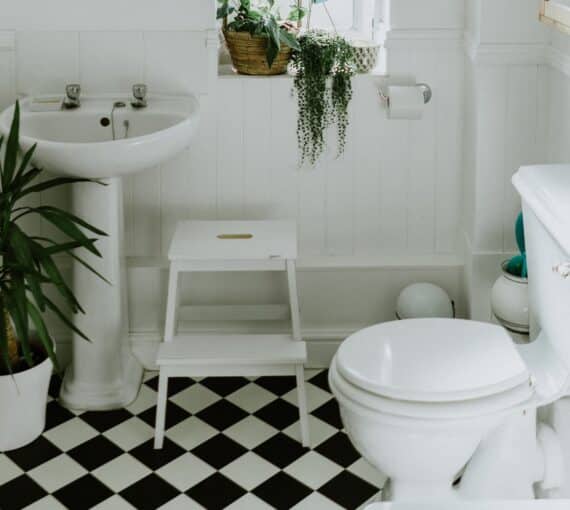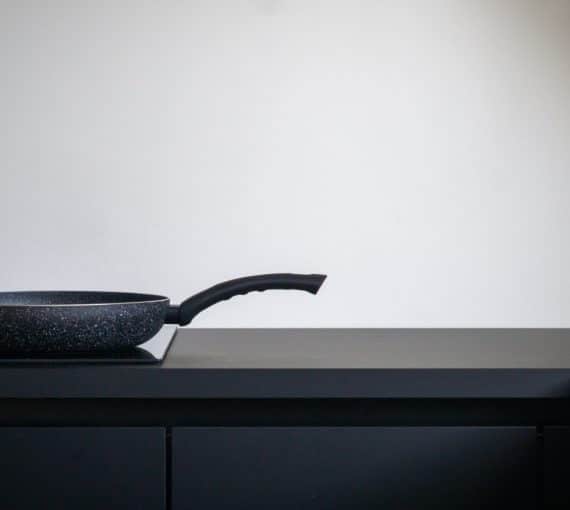
Bidets are bowls with plumbing used to wash people’s body parts. Popular in many parts of the world for hundreds of years, they’re only beginning to gain popularity in North America. Why?
When it comes to greening daily routines, the environmental impacts of bathroom habits are often overlooked.
Consider toilet paper — ubiquitous in Western culture. Is there an eco-friendlier option? Enter the bidet.
The tree-to-toilet pipeline
The journey of toilet paper begins in the forest, long before it finds its way into a bathroom. But its story doesn’t end there. Even after it’s flushed away, the environmental impact continues: clearcut forests, long-term climate change and toxic pollution.
Impact of toilet paper on the boreal forest
Trees are a renewable resource but logging in primary forests (i.e., those that have never been disturbed by industry) has significant impacts on biodiversity and on Earth’s climate.
Logging fragments habitat, compacts soil, introduces diseases and invasive species, alters nutrient cycles, increases wildfire risk and often leads to the destruction of old growth. Forests are also carbon sinks, meaning they absorb and store more carbon dioxide from the atmosphere than they release.
The most appalling use of trees is for disposable products like toilet paper.
In 2019, the Natural Resource Defense Council published The Issue with Tissue: How Americans Are Flushing Forests Down the Toilet. It showed how major U.S. tissue product manufacturers drive environmental degradation by using fibre from primary forests to make single-use products. Each year, Canada’s logging industry degrades almost half a million hectares of climate-critical, carbon-rich boreal forest (the “lungs of the north”) — in part to feed U.S. demand for toilet paper! —which has a devastating impact on the global climate.
In 2020, the NRDC published The Issue with Tissue 2.0, noting changes in the industry landscape. In 2022, it released an updated scorecard to reflect the growing urgency with which scientists are calling for the protection of primary forests. The 2022 scorecard provides a snapshot of the sustainability of the marketplace for toilet paper, paper towels and facial tissue, revealing which companies are embracing climate-friendly products and which are continuing to fuel forest degradation and climate change.
Logging also contributes to the decline of boreal caribou, which need large swathes of intact forest to roam. Currently listed as “threatened” with extinction under Canada’s Species at Risk Act, boreal caribou are an “umbrella species,” so protecting its habitat supports other wildlife.
The impacts of harvesting forests for toilet paper are also felt by Indigenous communities. An Issue with Tissue documentary film released in 2023 weaves together knowledge from more than 50 environmentalists, scientists and Indigenous elders to tell the complex story of the toilet paper industry’s impact on the posterity of the world’s largest intact forest.
Toilet paper production
Manufacturing toilet paper uses energy and water, including for cutting, pulping, bleaching and drying.
“Forever chemicals” in toilet paper
Toilet paper contains compounds found in perfluoroalkyl and polyfluoroalkyl substances, or PFAS — often referred to as “forever chemicals” because they don’t break down easily. Because they resist water, stains and heat, PFAS are used in a range of industrial, commercial and personal health products. They’re linked to significant health problems, such as cancer, and can harm human reproductive, immune and cognitive functions. PFAS in toilet paper can continue to contaminate the water system after it’s flushed and sent to sewage treatment plants. Brands that use recycled paper contain as much PFAS as those that don’t.

What not to flush
Meet the unflushables: tampons, condoms, floss, hair, disposable wipes, medications and more. Protect our water sources, aquatic life and ecosystems one flush at a time.
Toilet taboos: cultural hygiene practices
Throughout history, humans have used a variety of natural tools and materials to clean themselves, from communal sanitary sponges and stones to seashells and animal furs. Local customs, climate and social hierarchy had an impact on toilet habits — some of which still exist today.
Culture and customs also play a role in how we talk about toilet habits. Taboos can limit discussion on the environmental impacts of bathroom habits and prevent people from adopting new green practices.
Cultural attitudes were magnified during the onset of the COVID-19 pandemic when people quickly emptied store shelves of toilet paper throughout North America, revealing toilet’s paper’s prominent societal role. Time to change this!
History of bidets
Bidets are bowls with plumbing used to wash people’s body parts. Popular in many parts of the world for hundreds of years, they’re only beginning to gain popularity in North America. Why?
The earliest known written reference to the bidet dates back to 1710 in France.
The name is rooted in the French word for “pony,” a playful hint that the basin should be straddled when in use. However, it also picked up this moniker because royalty would use the bidet to clean up after a ride. Bidets were common in high society, but throughout the 1800s, and with the introduction of indoor plumbing, a “bidet boom” occurred. Soon, other social classes in France, and other countries in Western Europe, Latin America, the Middle East and Asia began to adopt the hygienic practice in their own way.
Despite the global popularity, in the U.S. and Britain, bidets were associated with sex and scandal. Various forms of douching were thought to prevent pregnancy, so bidets were perceived as a form of birth control.
Though this notion is now outdated, there is still widespread stigma and fear in North America that bidets are not as “sanitary or effective” as toilet paper. This is untrue. Bidets continue to be an essential bathroom fixture in continental Europe, Japan, Venezuela and Argentina. Their popularity continues to rise globally.
The classic bidet is a miniature, bathtub-like fixture situated next to the toilet, with taps on one end. You may still see bidets styled after the classic version in hotels and older buildings in Europe and South America. But bidets have evolved immensely through technological innovation. New technological iterations have also made bidets a lot more affordable. You can now purchase a semi-discreet bidet attachment (that you can install on your toilet bowl) for as little as $40.
Are bidets a greener option?
Yes!
Bidets can eliminate the need for toilet paper altogether. While some users may still use toilet paper to dry themselves, they’ll use a lot less. And a towel can do just as well!
A common myth about bidets is that they waste water — actually a trivial amount compared to how much water is used to produce toilet paper. Kai Chan of the University of British Columbia’s Institute for Resources, Environmental and Sustainability said, “while the bidet will use a little more water at the source, it’s absolutely negligible compared to the water that would go into making toilet paper.”
Barriers to bidets
Unfortunately, bidets might not be a realistic option for everyone. Some reasons why:
- Cost: The upfront cost of a bidet or bidet attachment is more than toilet paper. Even though they have become a lot more affordable through technological innovation, that does not mean everyone can afford one. They pay for themselves over time as you use less toilet paper.
- Installation: Depending on the model, installing a bidet can be an involved process that requires hiring a professional. Simpler bidet attachments can also have limitations depending on your toilet bowl size and water supply hose access.
- Lack of availability: If you live in a rural or more isolated community, bidets and bidet attachments may not be available or within shipping range.
- Water access: Not everyone has consistent access to clean water. Bidets rely on being connected to your toilet’s water supply. If this is limited for you, a bidet is not practical.
Alternatives to toilet paper and bidets
Every toilet, user and bathroom need is different. Regardless of your situation, you can still make Earth-friendly decisions.
If toilet paper isn’t something you’re ready or able to forgo, choose products that don’t contain virgin tree fibre (although you’ll still be exposing yourself to PFAS). The Environmental Paper Network reports that toilet paper made from trees has three times the climate impact as toilet paper made with recycled materials. Opt for toilet paper made of postconsumer recycled materials or other materials (e.g., bamboo).
Here are a few other Earth-friendly options for when nature calls:
- Reusable toilet cloths. Typically made from organic cotton flannel. Keep a closed lid bin beside your toilet for after use and throw in the wash when full. Great for use in combination with a bidet.
- Water bottle. Make your own handheld bidet. Cut a small hole in the cap to create a concentrated stream of water. (Know your plastics!)
- Mullein leaves. Commonly referred to as “nature’s toilet paper,” the soft and highly water absorbent leaves are found almost everywhere in North America. Consider sourcing and packing some for backcountry adventures.
- Paper. In emergencies, gather old newspapers, scrap paper and phone book pages and soak them lightly in water to soften. Do not flush.
The most eco-friendly bathroom fixture is a composting toilet. Though they’re not an accessible or practical option for everyone (due to price, installation, etc.), composting toilets are rising in popularity as a waterless, odourless solution for off-grid homes and RV owners. They require no plumbing, septic or sewer connection. A composting toilet system collects human waste and converts it into compost or nutrient-rich matter. (Do not use this compost to feed your vegetable garden or other edible plants.)


